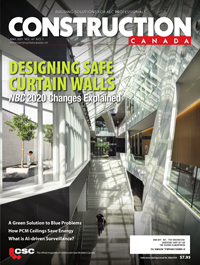Innovative materials for noise reduction in commercial spaces
Acoustic furniture
Cushioned, upholstered furniture does a better job of absorbing sound than more sound-reflective metals and plastics. However, traditional cushioned furniture does not always perform well outside of lobbies or waiting rooms, with more rigid desks and chairs preferred by many professionals for maintaining proper work posture.
Some companies have taken this into consideration to blend both these functions and produce sound-absorbing furniture fit for the office. With cutting-edge engineering that makes use of fabrics, angles, and built-in barriers, this type of innovative furniture works wonders for enhancing localized productivity in larger commercial spaces.
Acoustic paint
Although it is not the most impactful means of soundproofing a commercial building, acoustic paint is another way to help achieve some level of sound mitigation. As its name applies, paint is rolled or sprayed onto interior surfaces to help deaden some of the sound in noisy facilities.
Acoustical paint is noticeably thicker than standard wall paint. This additional soundproofing mass is achieved through the presence of fillers made of ThermaCels and ceramic microspheres. ThermaCels are vacuum-sealed packages with soft pigments inside. When sound hits these packages, the sound waves vibrate and lose intensity as they travel through the pigments. The ceramic microspheres add density between the ThermaCels, eliminating gaps through which sound waves can typically travel in regular wall paint. It is recommended to apply multiple layers or coats of acoustical paint to effectively maximize its sound mitigating potential.
With that said, due to its relatively minor mass, acoustic paint is not as effective at soundproofing as the other materials listed. However, it does have the benefit of being fast and affordable. It can also have some utility in older structures which have many cracks and crevices in the walls and window framing. Spray-on acoustic paint can effectively penetrate these areas and provide some sound defence.
Improving customizability
Managing noise in a commercial space is critical for ensuring the productivity of employees and the satisfaction of guests. While any of the seven innovative materials mentioned can help manage sound in a commercial structure, framing with ICF will be the most impactful in reducing sound, as it reflects and absorbs sound waves at the foundational level. However, if the building is already intact, office acoustic panels and ceiling clouds are highly effective at absorbing sound waves.
Notes
1 Learn more about decorative acoustic panels, acousticalsolutions.com/decorative-acoustic-panels.
Ryan Shure is a freelance writer who loves sharing his knowledge and expertise on renovations and construction. He lives in Tampa, Florida, where he enjoys spending time researching building material trends in his free time. Shure’s work as a freelance writer can be found on Building Product Advisor.








